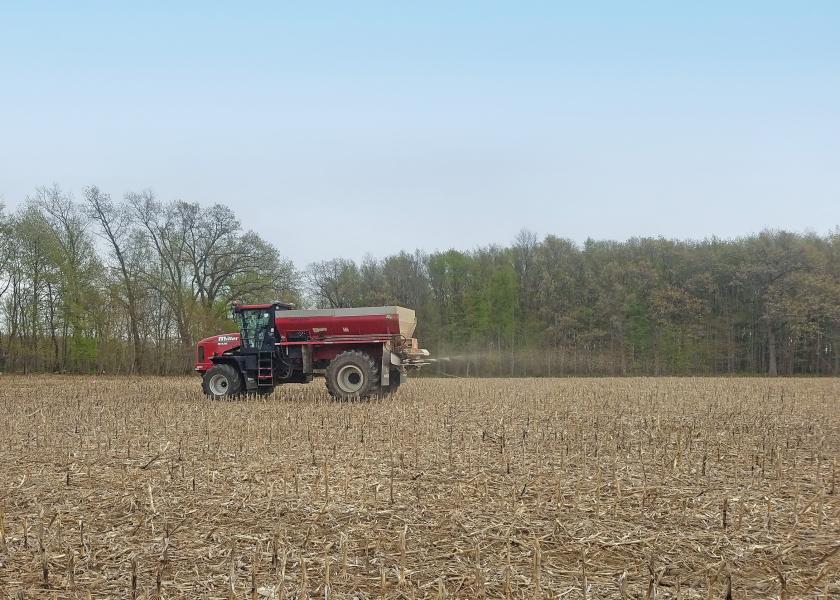Where Urea Fits

“Can I replace some of my nitrogen in corn this spring with urea?” The farmer on the phone asks Ken Ferrie.
“The short answer is yes – especially on wheat acres going to corn,” says Ferrie, Farm Journal Field Agronomist. “Many farmers in areas of the U.S. and in some other countries use mainly urea as their N source.”
It’s what he’s told farmers this winter who are telling him they have found a source of urea that’s cheaper than other nitrogen (N) options.
But there are some challenges with using urea, Ferrie cautions, that farmers need to understand so they can work around them.
RISK VERSUS REWARD
The No. 1 risk with urea is volatility. “You need to use a urease inhibitor,” he says. “That will buy you some time after application to get the urea moved into the ground.”
Be aware that applying urea to frozen ground puts you at risk of runoff if a rain event occurs. That risk goes down, Ferrie says, if you have a cover crop growing.
“If your present plan is weed and feed, where you blend your herbicide with your 28% and 32% and make it one pass, know with urea, you’re likely going to have to make two passes – or get your retailer to impregnate that urea with the herbicide,” he says.However, many retailers don’t want to do this because of fear of contamination at the blender.
BEWARE OF BURN
Urea should, in general, be broadcast and immediately incorporated into the soil, according to the University of Minnesota Extension experts. If applying urea-based fertilizer in a band, they suggest separating it from the seed by at least 2" of soil. Additionally, do not seed-place urea or urea-based fertilizer with corn.
Ferrie says to keep in mind urea’s first conversion is to ammonium.
“Ammonium is like jet fuel to soil microbes,” he says. “I’ve seen in our plots where the carbon tie up from the microbes will immobilize 150 lb. of urea, especially in corn-on-corn. It disappears from the balance sheet.”
But, he adds, it’s just immobilized and will mineralize back in the system later. But corn can experience some N deficiencies waiting for that to occur.
“The same thing happens with your 28% and 32%, but one-fourth of that product is nitrate, which the microbes don’t snatch up as fast, and it usually keeps the corn plant happy until this mineralization takes place,” he says.
The temporary slowdown in corn can be avoided with planter-applied N.
“There are places where urea will help cut your N cost, so I’m not against it,” Ferrie says. “I just want everybody to understand there’s some extra hoops you’ve got to jump through if you’re not used to it,” he adds.
Ferrie: Treat Sulfur Like A Macronutrient In Corn To Boost Yields
How to Tackle Tar Spot In 2023
Corn Seedling Diseases Don't Seem Dramatic, But The Yield Losses they Cause Sure Are
Corn Yield Record Shattered By Farmer’s 459.51 Dryland Bushels
Ferrie: You Can Reduce Fertilizer and Still Harvest Big Corn Yields, But Some Parameters Apply







